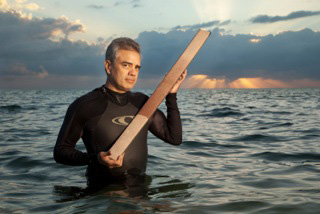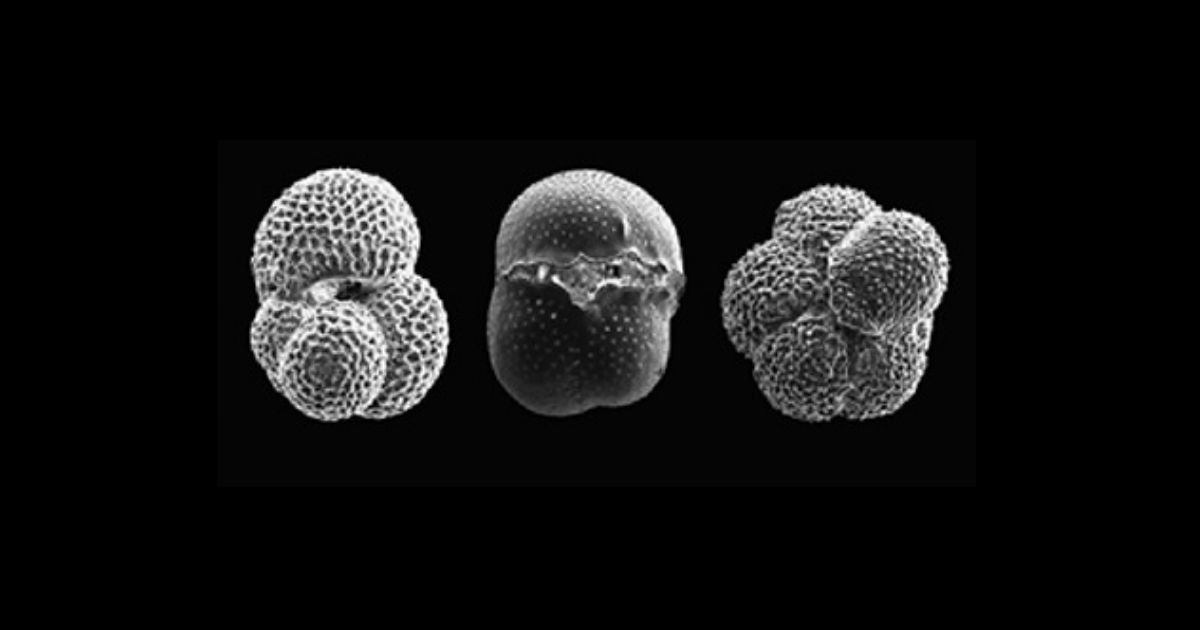A massive release of greenhouse gases, likely triggered by volcanic activity, caused a period of extreme global warming known as the Paleocene-Eocene Thermal Maximum (PETM) about 56 million years ago. A new study now confirms that the PETM was preceded by a smaller episode of warming and ocean acidification caused by a shorter burst of carbon emissions.
The new findings, published March 16 in Science Advances, indicate that the amount of carbon released into the atmosphere during this precursor event was about the same as the current cumulative carbon emissions from the burning of fossil fuels and other human activities. As a result, the short-lived precursor event represents what might happen if current emissions can be shut down quickly, while the much more extreme global warming of the PETM shows the consequences of continuing to release carbon into the atmosphere at the current rate.
"It was a short-lived burp of carbon equivalent to what we've already released from anthropogenic emissions," said coauthor James Zachos, professor of Earth and planetary sciences and Ida Benson Lynn Chair of Ocean Health at UC Santa Cruz. "If we turned off emissions today, that carbon would eventually get mixed into the deep sea and its signal would disappear, because the deep-sea reservoir is so huge."
This process would take hundreds of years -- a long time by human standards, but short compared to the tens of thousands of years it took for Earth's climate system to recover from the more extreme PETM.
 Jim Zachos holds a sediment core from the seafloor showing the red clay layer that marks the Paleocene-Eocene Thermal Maximum (PETM), a period of extreme global warming and ocean acidification around 56 million years ago. (Photo credit: Ira Block/National Geographic)
Jim Zachos holds a sediment core from the seafloor showing the red clay layer that marks the Paleocene-Eocene Thermal Maximum (PETM), a period of extreme global warming and ocean acidification around 56 million years ago. (Photo credit: Ira Block/National Geographic)
The new findings are based on an analysis of marine sediments that were deposited in shallow waters along the U.S. Atlantic coast and are now part of the Atlantic Coastal Plain. At the time of the PETM, sea levels were higher, and much of Maryland, Delaware, and New Jersey were under water. The U.S. Geological Survey (USGS) has drilled sediment cores from this region which the researchers used for the study.
The PETM is marked in marine sediments by a major shift in carbon isotope composition and other evidence of dramatic changes in ocean chemistry as a result of the ocean absorbing large amounts of carbon dioxide from the atmosphere. The marine sediments contain the microscopic shells of tiny sea creatures called foraminifera that lived in the surface waters of the ocean. The chemical composition of these shells records the environmental conditions in which they formed and reveals evidence of warmer surface water temperatures and ocean acidification.
First author Tali Babila began the study as a postdoctoral fellow working with Zachos at UC Santa Cruz and is now at the University of Southampton, U.K. Novel analytical methods developed at Southampton enabled the researchers to analyze the boron isotope composition of individual foraminifera to reconstruct a detailed record of ocean acidification. This was part of a suite of geochemical analyses they used to reconstruct environmental changes during the precursor event and the main PETM.
"Previously, thousands of foraminifera fossil shells were needed for boron isotope measurement. Now we are able to analyze a single shell that's only the size of a grain of sand," Babila said.
Evidence of a precursor warming event had been identified previously in sediments from the continental section at Big Horn Basin in Wyoming and a few other sites. Whether it was a global signal remained unclear, however, as it was absent from deep-sea sediment cores. Zachos said this makes sense because sedimentation rates in the deep ocean are slow, and the signal from a short-lived event would be lost due to mixing of sediments by bottom-dwelling marine life.
"The best hope for seeing the signal would be in shallow marine basins where sedimentation rates are higher," he said. "The problem there is that deposition is episodic and erosion is more likely. So there's not a high likelihood of capturing it."
The USGS and others have drilled numerous sediment cores (or sections) along the Atlantic Coastal Plain. The researchers found that the PETM is present in all of those sections, and several also capture the precursor event. Two sections from Maryland (at South Dover Bridge and Cambridge-Dover Airport) are the focus of the new study.
"Here we have the full signal, and a couple of other locations capture part of it. We believe it's the same event they found in the Bighorn Basin," Zachos said.
Based on their analyses, the team concluded that the precursor signal in the Maryland sections represents a global event that probably lasted for a few centuries, or possibly several millennia at most.
The two carbon pulses -- the short-lived precursor and the much larger and more prolonged carbon emissions that drove the PETM -- led to profoundly different mechanisms and time scales for the recovery of the Earth's carbon cycle and climate system. The carbon absorbed by the surface waters during the precursor event got mixed into the deep ocean within a thousand years or so. The carbon emissions during the PETM, however, exceeded the buffering capacity of the ocean, and removal of the excess carbon depended on much slower processes such as the weathering of silicate rocks over tens of thousands of years.
Zachos noted that there are important differences between Earth's climate system today and during the Paleocene -- notably the presence of polar ice sheets today, which increase the sensitivity of the climate to greenhouse warming.
In addition to Babila and Zachos, the coauthors of the paper include Gavin Foster and Christopher Standish at University of Southampton; Donald Penman at Utah State University; Monika Doubrawa, Robert Speijer, and Peter Stassen at KU Leuven, Belgium; Timothy Bralower at Pennsylvania State University; and Marci Robinson and Jean Self-Trail at the USGS. This work was funded in part by the National Science Foundation.



